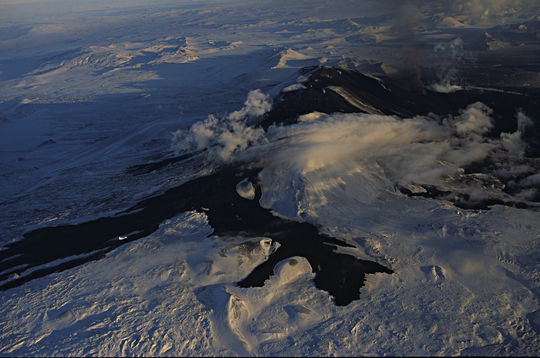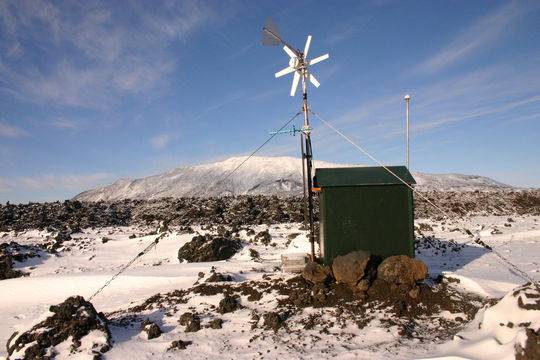Hekla eruptions
Hekla eruptions
The Hekla volcanic system has erupted 23 times in Historical time and is the third most active system in Iceland. The activity has changed in terms of frequency and type of eruptions with time. The period 9000-7000 years ago was dominated by effusive basaltic volcanism, the period 7000-3000 years ago was characterized by infrequent but large explosive silicic eruptions at the central volcano, and the last 3000 years have been dominated by more frequent and smaller mixed silicic and effusive basaltic eruptions.
The preceding repose period commands the SiO2 content of the first erupted magma, and at the same time the magnitude of the opening phase, i.e. the shorter the repose the smaller is the following eruption. The chemical composition of erupted material also changes with time in the eruption. The opening phase has the highest SiO2 content and during the eruption, it lowers. This explains why tephra layers from Hekla often have a light coloured base and a dark top, making them ideal tephra marker layers.
For more information on the Hekla volcanic system, visit Catalogue of Icelandic volcanoes.

Hekla 20th February 1991. Photo: Oddur Sigurðsson.

IMO borehole strain station, near Hekla. Photo: Matthew J. Roberts.



